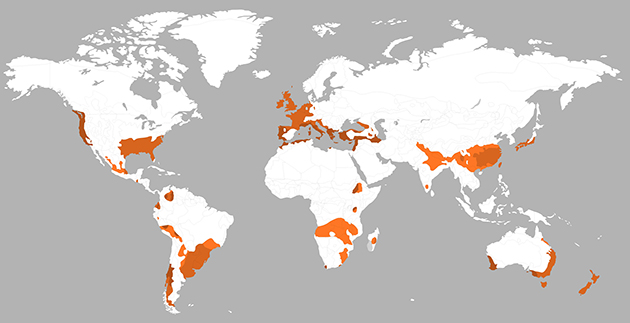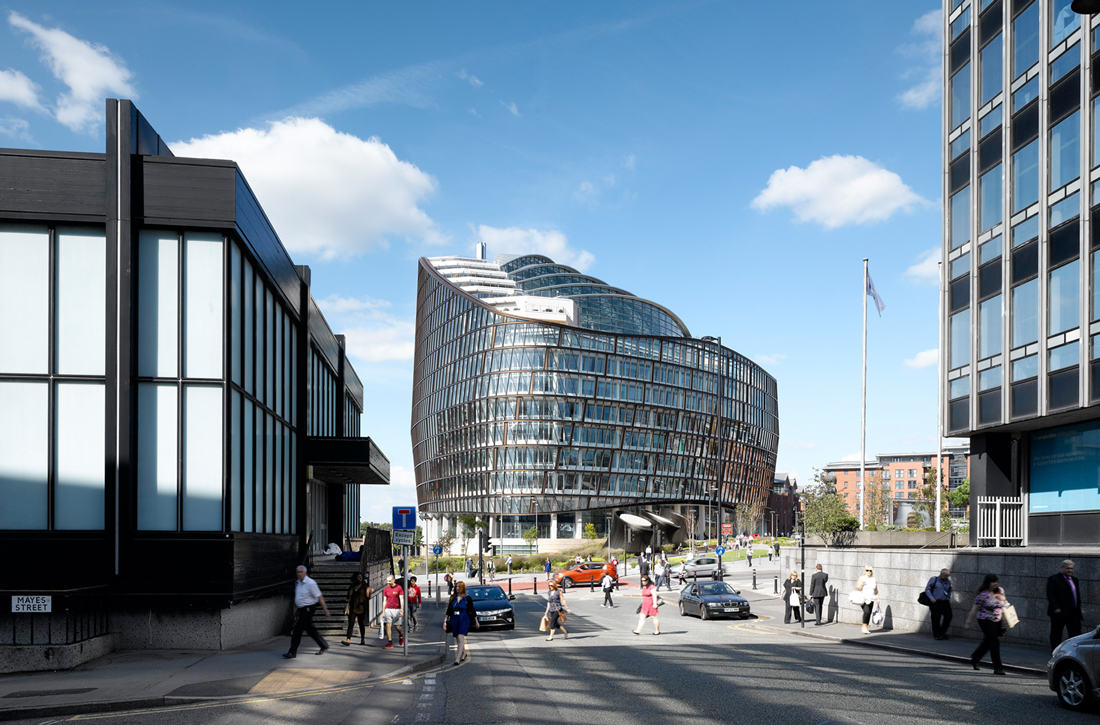.jpg)
PROJECT INFO
Building type:
Offices
Year:
2013
Project Status:
Built
Gross Area:
214000 Sqm
Certificates:
LEED v3 BD+C (Core & Shell) Platinum
Climatic zone:
Temperate
MY LAST SEEN PROJECTS
.jpg)


.jpg)
PROJECT DESCRIPTION
Skidmore Owings & Merrill LLP (SOM)’s design for the 71-story Pearl River Tower in Guangzhou, China, was selected in a 2005 competition.
The 309-metres-tall high performance building was designed with energy efficiency as its top priority. Its design philosophy combines active and passive sustainable measures to reduce its impact on the local electrical grid, reduce carbon emissions, and provide the most comfortable interior environment possible for its occupants.
The 214,000-square-meter Pearl River Tower redefines what is possible in sustainable design by incorporating the latest green technology and engineering advancements. The soaring tower's sculpted body directs wind to a pair of openings at its mechanical floors, where travelling winds push turbines that generate energy for the building. Other integrated sustainable elements include solar panels, a double-skin curtain wall, a chilled ceiling system, under-floor ventilation, and daylight harvesting, all of which contribute to the building’s energy efficiency.
AWARDS
2015 Award of Excellence: Sustainable Design Category – Structural Engineers Associations of Northern California
2014 Commercial High-Rise Architecture, China - International Property Awards
2014 Green Good Design Award – Chicago Athenaeum
2014 Architizer A+ Award: Office Building High Rise, Finalist
2014 Most Innovative Project: Mechanical Systems Design – American Society of Civil Engineers
2013 Best Innovative Green Building – MIPIM Asia
2013 Best Tall Building Asia & Australia: Finalist – Council on Tall Buildings and Urban Habitat (CTBUH)
2012 Excellence in Engineering – ASHRAE – Illinois Chapter
2010 Green Building Design Award - Chicago Athenaeum
2008 – Green, Carbon-Lowering & Environmental Category: Gold Award – Spark Awards
SUSTAINABILITY FEATURES
Innovative cooling system
Shading system
High efficient façade
Photovoltaics
Water-saving sanitary appliances
Low-emitting materials and finishes
High efficient lighting
Daylight sensors
On-site renewables
Daylighting maximised
SUSTAINABILITY STRATEGY
Driven to create one of the world's most energy-efficient skyscrapers, SOM incorporated the latest sustainable technology and engineering know-how into its design of the 309-meter-tall Pearl River Tower. The design embodies the idea of humankind existing in harmony with the environment.
The tower's sleek, aerodynamic form was developed through a careful understanding of solar and wind patterns around the site. The design optimizes the solar path and utilizes the sun to the building's advantage. The tower's sculpted body directs wind to a pair of openings at the mechanical floors, where turbines generate energy for the building.
Other integrated design and engineering elements include solar panels, a double-skin curtain wall, a chilled ceiling system, underfloor air ventilation, and daylight harvesting. Collectively, these attributes will achieve significant energy savings and will reduce the tower's dependency on the city's infrastructure.
SUSTAINABILITY FEATURES
Pearl River Tower is designed to be one of the world’s highest-performing super-tall buildings. These high-performance sustainable features include:
Exterior façade and Integrated photovoltaics (PVs)
The tower is one of the first super-tall buildings to be certified as a LEED Platinum building by the US Green Building Council (USGBC) – the highest level of sustainable design recognised by the internationally recognised organisation.
The tower’s design incorporates a dynamic high-performance building envelope. The façade system is oriented to optimise the use of daylighting while controlling solar loads. And integrated assembly provides superior thermal performance and high-visual transmittance that increases daylighting to the interior spaces.
A low-E coated, insulating glass unit, with 240mm cavity between the two layer of glass, forms the exterior. Motorized blinds/sunshade devices within the cavity provide solar shading and glare control. A building management system controls the tilt angle of the blinds automatically in response to solar intensity, solar altitude and azimuth angles. Frit glass with external shades and automated internal blinds are used on East and West elevations.
PVs are integrated into the building’s external shading system providing a dual benefit – they produce about 200,000 kWh/yr while protecting the building’s façade from the solar gain.
Vertical Axis Wind turbines (WAWT)
Energy is generated by vertical axis wind turbine systems integrated into the building’s design and structure. The tower’s curvilinear form enhances performance by funnelling air through turbine inlets in the façade. The power is converted to electrical energy and used by the building.
Radiant cooling coupled with underfloor air ventilation
A radiant-cooling ceiling system delivers sensible cooling directly to the space, de-coupling directly the sensible cooling load from the latent cooling load.
The radiant cooling panel system is combined with direct outdoor air system (DOAS) and underfloor air delivery that provides improved indoor air quality and air change effectiveness. High-efficiency filters are provided to improve the quality of air entering the building. This approach reduced the building’s floor-t-floor height from 4.2 to 3.9 metres – essentially saving five stories of construction.
The energy saving associated with the reduced airflow and radiant ceiling system is arguably the most sustainable aspect of the tower’s design.
Daylighting reflectors
Within the ground floor lobby, the curved white fritted-glass ceiling and hanging metal panels are designed as a series of deflectors so that daylight can be redirected deep into the lobby space, reducing electrical consumption due to artificial lights.
High-efficiency lighting and Daylighting-responsive controls
The high-efficiency fluorescent lighting fixtures in the tower use specially engineered, curved white radiant ceiling panels as reflectors to diffuse light evenly and efficiently into the office space. There are daylight controls and occupancy sensors on the headquarters floors that maximize daylight and reduce electrical consumption. Luminaries placed less than six metres from windows use automatic dimming controls.
Vertical transportation
Double-deck elevators have been installed to reduce the size of the building’s core and create a more efficient floor plate.
High-efficiency chiller system
Chiller heat recovery is used to recover the heat rejection from the chiller in order to produce domestic hot water.
ENERGY DATA
Energy consumption:
N/A (N/A )
Consumption type:
Annual carbon footprint:
N/A (N/A )
Climate zone:
Temperate
Min. temperature =
N/A
Max temperature =
N/A
RH =
N/A

CLIENT
Client:
Guangzhou Pearl River Tower properties Co. Ltd
DESIGNERS
Architect:
Skidmore, Owings & Merrill LLP
Architect:
Skidmore, Owings & Merrill LLP , Guangzhou Design Institute
CONSULTANTS
Acoustical consultant:
Shen Milsom Wilke, Inc.
Building services engineer:
Skidmore, Owings & Merrill LLP
Green certification consultant:
Bureau Veritas
Lighting consultant:
Pivotal
Specialist consultant:
Rolf Jensen & Associates, Inc. , SWA Group , Fortune Consultants, Ltd. , RWDI , Highrise Systems, Inc.
Structural Engineer:
Skidmore, Owings & Merrill LLP
CONTRACTORS
Contractor:
Shanghai Construction Group
OTHER PROJECTS BY TEAM
SIMILAR PROJECTS

Avenida República do Chile - Centro, Rio - Rio de Janeiro, Brazil | 2013

.jpg)

.png)

Via Filippo Turati, 25, 20121 Milano, Italia | 2012

Via Energy Park, 20871 Torri Bianche MB, Italy | 2009


.jpg)
.jpg)



.jpg)
.jpg)

.jpg)
.jpg)
Seattle, WA, USA | 2012
.jpg)








Via Umberto Forti, 1, 56121 Montacchiello PI, Italia | 2016

.jpg)
Via Chiese, 72, 20126 Milano MI, Italia | 2018
.jpg)
Viale della Liberazione, 20124 Milano MI, Italia | 2017
.jpg)
Via Bernina, 12, 20159 Milano MI, Italia | 2012

.jpg)


New Cairo City, Cairo Governorate, Egypt | 2016




Parma, Province of Parma, Italy | 2018
.JPG)
.png)




Manhattan, New York, NY, USA | 2016

Via Fabio Filzi, 29, 20124 Milano MI, Italia | 2015

Piazza Tommaso Edison, 20123 Milano MI, Italia | 2017
